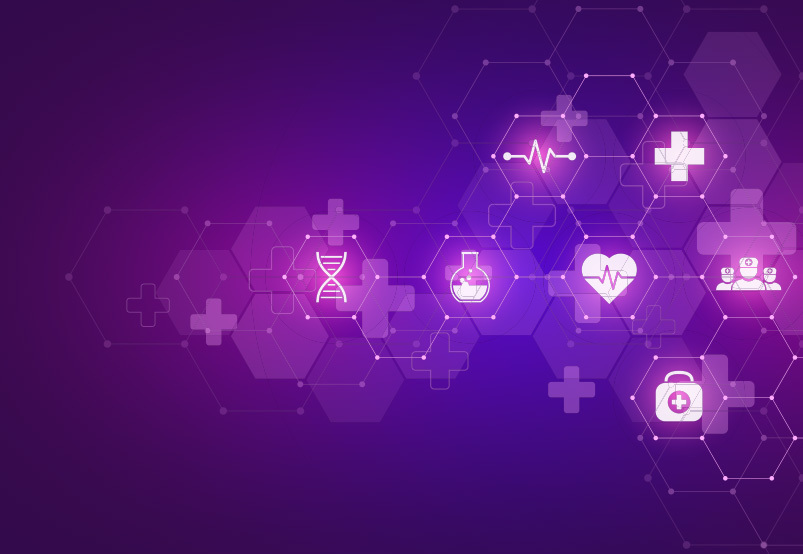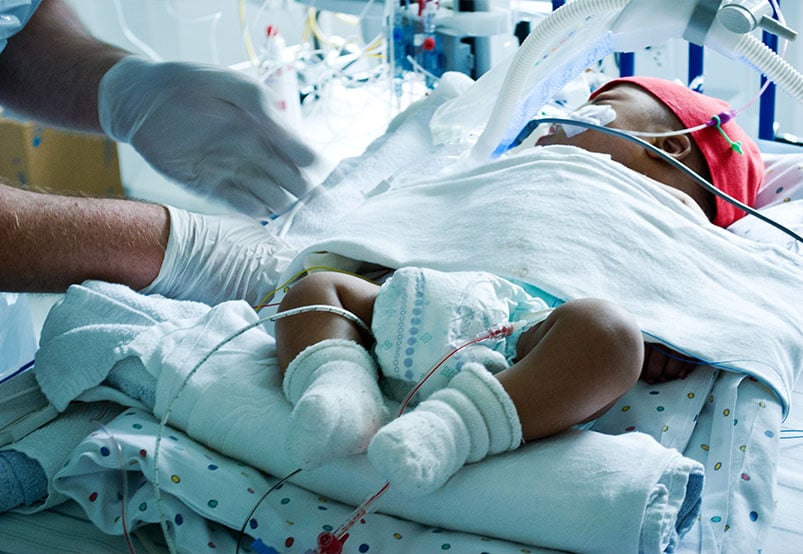
It was as if she were speaking for clinicians everywhere when Reenu Eapen, M.D., said what was on everyone’s mind: “Data comes at us from all directions. The ability to prioritize and analyze it effectively in taking care of our patients is a very important thing. Yet often limited retrospective data is the best healthcare can offer when it comes to making clinical decisions.”
Called on to offer her expertise for the Health IT Analytics webcast, Understanding the Data Challenges of Critical Care, Dr. Eapen, a pediatric cardiologist with Fetal Care Center in Dallas, candidly discussed the data challenges she and other providers face in caring for their patients.
These challenges around prioritization of data are one of the top issues keeping healthcare from realizing the long-held visions of improved outcomes based on research, data and the sophisticated monitoring we’ve been working toward for more than half a century, now coupled with the promise of AI and machine learning.
It all begins with capturing waveform data in the first place, Cheryl Hiddleson, MSN, RN, CENP, CCRN-E, director of the eICU at Emory Healthcare, emphasized as she also served as a speaker for the webcast. The challenge is that in most healthcare settings, limited amounts of retrospective data are the best clinicians can access — and that’s if the data is accessible, seeing as many devices are locked down by their respective manufacturers.
“The more frequent the data points are, the greater the chances of being more accurate,” Hiddleson emphasized. “Streaming data is constantly moving but there is no solution to capture it. However, most healthcare systems don’t have access to that because device integration isn’t everywhere yet — not to mention that the interoperability between systems takes too many steps, creates gaps in documentation, and is subject to error.”
We’ve heard these frustrations before, loud and clear. They come from professionals at all levels in healthcare, from hands-on floor staff, to nursing leaders, physicians to IT providers, hospital CEOs to other senior leaders. The message is clear: We need the information. We need the data.
We especially need it in critical care settings, where lives are on the line. Right now.
Getting the Discussion Started
That’s why we asked to bring this discussion to the forefront via Health IT Analytics. We partnered with Intel to sponsor this webcast because change is made when people recognize both the issues and the opportunities. It is just another component of our educational mission to work with our partners and providers to help bring the challenges to light and create an educational network that works together to talk about the changes that need to happen to leverage data and create a new standard of care.
Hearing from clinicians like Dr. Eapen and Cheryl Hiddleson, drives all of us forward in that collective mission.
Hiddleson is director of the eICU Center at Emory Healthcare. A registered nurse for more than 30 years, she felt the frustrations as she nursed patients in the ICU and hoped for more advanced tools to help her do her job. Today, she provides clinical and operational leadership for the eICU, a program she helped to develop at Emory that provides 24/7 monitoring of patients and allows clinicians access to historical and real-time data.
Over the past five years, she has also become involved in research and development of remote monitoring and predictive analytic applications focused on reducing serious complications for critical care patients. The results have borne out the promise: Hiddleson’s department has been credited with reducing length of stay and improving outcomes for patients in the ICU.
Dr. Reenu Eapen of the Fetal Care Center in Dallas chose a career in one of the most challenging areas of medicine, pediatric cardiology – particularly fetal cardiology — because she knew that differences she made could have a lifetime of impact on a child and their family.
“I’ve always wanted to take care of people, and make a difference for people,” she said, when asked why she went into medicine. “I loved to see them grow up and become the people they were meant to be; it’s so wonderful to watch.”
The heart that Dr. Eapen has for her tiny patients is inspiring — and reminds us why the next-level delivery of healthcare is vital. It’s important for those tiny hearts she operates on, and for the moms and dads who are looking forward to a lifetime together with their child.
Bringing Issues to Light; starting with the data capture and integration
From their respective points of view, Dr. Eapen and Cheryl Hiddleson spoke to the issues surrounding the capturing, integration, and utilization of data in the ICU. Some of the key takeaways highlighted above and below that you will hear on the webcast include:
-
Limited retrospective data is the best healthcare can offer when it comes to making clinical decisions.
-
It’s difficult to get real-time data without someone else pushing a button or entering something into the system.
-
The lack of interoperability between systems takes too many steps, creates gaps in documentation, and is subject to error.
-
Streaming data is constantly moving with no solution to capture it.
-
Nurses spend a great deal of their time being scribes rather than providing care.
-
Alarm fatigue means turning off alarms.
Dr. Eapen and Cheryl Hiddleson highlighted these data challenges as the first step in the transformation journey. The next question they tackled… how do we get that data to the providers so they can take action?
Human Touch
Another point made during the discussion that was particularly important: Dr. Eapen and Cheryl Hiddleson both expressed that clinicians (not machines) will always be the ones making the decisions and providing the care.
“We still have to have the human component,” Hiddleson said, “High technology allows us to have high touch with our patients.”
Analytics and augmented intelligence in no way take the place of human decision-makers and care providers. Everyone agrees on this point. Having instant access to the data, and warnings about risk from transformations of that data, does however help empower clinicians as they make those decisions.
In a critical care setting, the need for accessible data is the most pronounced. “Within the ICU , where you want all that data presented to you, you need to have algorithms in place that warn you when there is a potential event coming,” Dr. Eapen said. “That only helps the clinician manage those patients better. It’s about helping you do your job more efficiently. It’s getting another brain on it.”
Telemedicine offers a different level of teamwork that Hiddleson says her team at Emory finds advantageous by giving providers what amounts to another set of eyes observing their patients through careful monitoring and analytics.
“The clinicians at the bedside may not have time to look at or simply don’t have access to the advanced tools we have,” Hiddleson said. “It helps reduce the burden on the bedside team. It also makes your patients safer because someone else is there and has your back. They are supporting you when you don’t see things.”
As with any important mission, it’s all about the team. Dr. Eapen and Cheryl Hiddleson were clear on that, and we couldn’t agree more.
Realizing the Vision of Patient-Centered Care
The webcast featuring Dr. Eapen and Cheryl Hiddleson brought many salient points to life that reinforce MIC’s mission. We believe that it’s time that clinicians had access to the tools they need to save the lives they’ve committed their careers to. It’s time that patients with critical care needs receive the benefit of all the waveform data they have created themselves. It’s time that healthcare takes a good look at how we can take that next step, and hearing these stories was the first step.
We know those issues well, as they are the very challenges we help providers and healthcare systems solve. Hearing them discussed openly in forums like this helps everyone recognize and put a name to a data problem plaguing healthcare today.
We have the opportunity to make a change, and the first step is seeing the roadblocks for what they are. There is much promise in leveraging device integration to get real-time data and go beyond a clinical summary and retrospective view to true clinical surveillance. There is a way to then leverage that collected data to create vendor agnostic remote monitoring and get more eyes on patients. And there is a way to then put analytics to work and use machine learning and artificial intelligence to its greater potential and finally realize the vision of patient-centered care.
Take a few minutes to listen to the Health IT Analytics webcast we were proud to sponsor along with Intel, and find out how your story aligns with theirs.
It might sound strikingly familiar to you. If you’d like to discuss your challenges with data and patient care, schedule a call with our clinical advisory team today.




